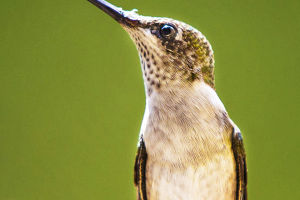When we think of penguins, we often picture their black and white streamlined coats, chubby figures, and cute faces. However, these beloved birds are more than just a symbol of Antarctica.
There are over 100 million penguins in the world, and they account for one-tenth of all seabirds. They come in 18 different species, with some living on islands along the coast and even in tropical regions like Africa and South America.
Penguins have unique adaptations that allow them to thrive in cold and harsh environments. In addition to their specialized feathers and a thick layer of fat, penguins have evolved to have streamlined bodies and flipper-like wings that help them swim through the water with incredible speed and agility.
They also have excellent vision above and below water, and their eyes are adapted to see in low-light conditions. Over millions of years, penguins have adapted to changing environmental conditions and diversified into the many species we see today.
Contrary to popular belief, penguins are not unique to Antarctica. They are distributed in many places throughout the southern hemisphere. Zoologists had verified that penguins are the oldest swimming birds and may have settled in Antarctica before the continent became ice-covered.
One unique feature that allows penguins to survive in Antarctica's frigid climate is their feather structure. Over time, their feathers have become overlapping and dense scales regulating body temperature. Additionally, they have a thick layer of fat that provides insulation and energy.
Penguins are also known for their loyalty. They are monogamous, with most species forming pairs that last for life. For example, Adele penguins have over 100 pairs living on their shore. Once they mate, they search for each other in the same places every year.
Let's take a closer look at three species of penguins:
1. Emperor Penguins
Emperor penguins are the largest species in the penguin family. They can grow up to 120 centimeters and weigh up to 50 kilograms. They have a distinctive patch of orange-yellow feathers under their neck that fades downwards and is deepest behind the ears.
2. Adélie Penguins
Adélie penguins are medium-sized and aggressive. They have a body length of 72-76 cm and primarily feed on krill, squid, and marine fish. They are social creatures and like to move in groups of dozens to hundreds.
3. Macaroni Penguins
The Macaroni penguin is playful by nature, and their name derives from its English translation. They are about 70cm long and weigh approximately 5.5kg. Like all penguins, they are exceptional divers but cannot fly.
In conclusion, penguins are fascinating creatures that have captured people's hearts worldwide. They are not unique to Antarctica but are distributed throughout the southern hemisphere, and come in various species.
With their distinctive feather structure, loyal nature, and impressive diving abilities, penguins are a testament to the incredible adaptability of the animal kingdom.


